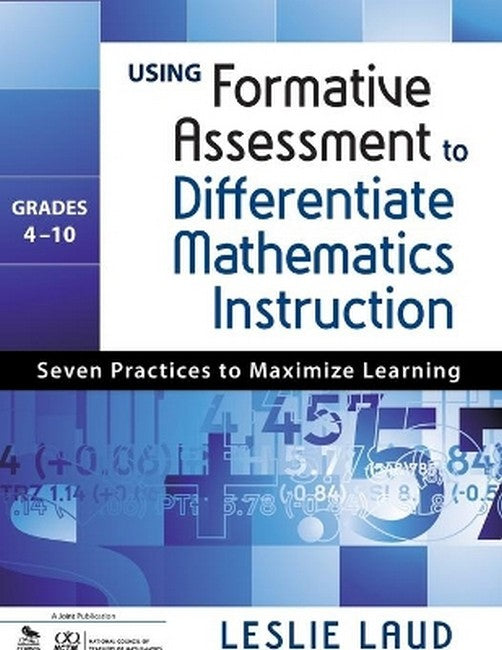List of Figures Preface Acknowledgments About the Author 1. Getting Started and Establishing Norms Getting Started Establishing Class Norms 2. Formative Assessment What is Formative Assessment? Where Am I? Involving Students in Self-Assessment Where Am I Going? Conveying Criteria or Learning Targets How Will I Get There? Providing Feedback Impact of Assessment on Confidence and Motivation 3. Tiered Instruction What Is a Tiered Lesson? Tiering by Student Characteristics Tiering by Instructional Characteristics Tiering Existing Textbook Lessons Creating a Tiered Lesson 4. Supporting Students Who Are Low Achieving Differentiating Instruction in Basic Facts Differentiating for Conceptual Understanding Differentiating Procedural Support 5. Challenging Students Who Are High Achieving Exemptions Based on Prior Knowledge and/or Pace of Learning Opportunities for Higher-Order Math Strategies to Avoid Importance of Challenge 6. Time-Saving Management Strategies Planning Lessons and Units Managing Students Working on Different Tasks Assigning Homework Grading Wrap-Up Suggested Resources References Index
"This practical and thought-provoking book offers time-saving strategies essential for every teacher in every discipline. The numerous self-assessments demonstrate that the best formative assessments are not merely given "to" students but are an interactive learning experience involving students, teachers, and professional colleagues." -Douglas B. Reeves, Founder The Leadership and Learning Center "This book provides a wealth of information for teachers and mathematics leaders to consider when implementing intervention models, RTI programs, and differentiated instruction for low achievers through high achievers." -Don S. Balka, Professor Emeritus St. Mary's College, Notre Dame, IN "Many of the seemingly abstruse or vague concepts-such as differentiated instruction-come alive in the numerous vignettes. Included are many examples of ways to quickly assess relevant student background knowledge before teaching a new topic and how to use this information for tiered instruction following an RTI (Response to Intervention) model." -From the foreword by Russel Gersten Director, Instructional Research Group & Professor Emeritus, University of Oregon Seven easy steps to differentiating math instruction for busy teachers Are you able to support your struggling students while also challenging your high achievers? Abundant research supports the value of differentiating instruction to students' individual levels, but putting it into practice can be daunting. Staff development expert and former math teacher Leslie Laud provides a clear roadmap for using formative assessment to differentiate mathematics instruction for students in Grades 4-10. She provides a comprehensive framework of seven research-based practices that show how to: Get started and establish norms Implement formative assessment Create tiered lessons Manage a multitasking classroom effectively Tested and enhanced by experienced math teachers, the book's strategies are designed for use in conjunction with any curriculum or textbook. Included are a wealth of practical examples, reproducibles, and student activities-all developed with effective time management in mind. Whether you are just starting or interested in enhancing your mathematics instruction, this book will prove an invaluable resource.
Leslie Laud has differentiated math instruction in her own classroom and in her co-teaching with her math colleagues, and has been doing so for almost two decades. She teaches an online course on Differentiated Middle School Math Instruction at Bank Street College of Education. Additionally, she has presented at many conferences both nationally and internationally, including The National Council of Teachers of Mathematics annual conference. She has also published many articles in leading journals such as Educational Leadership and Teaching Exceptional Children. She currently leads staff development groups with teachers in school systems in the Boston area. She received both her doctorate in curriculum and instruction and her master's in special education from Teachers College, Columbia University.

